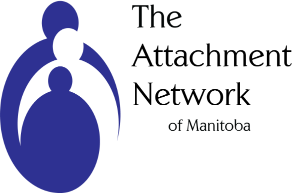The following blog submission has been approved by the Board of the Attachment Network of Manitoba
The Power of Strangers – The Benefits of Connecting in a Suspicious World, by Joe Keohane
A Book Review by Leslie Johnston
As often happens I caught just a snippet of an interview on CBC radio a while back. I couldn’t tell you who the interviewee was, but I heard the phrase “talking to strangers” and it piqued my curiosity (more on curiosity later). Not long after, I read an article that reported on a number of American School Divisions that are moving away from “Stranger Danger” curricula that in some jurisdictions have been in place for decades. This movement is an acknowledgment of the research that demonstrates clearly that children are much likelier to be harmed by someone familiar to them. It was also an acknowledgment that there are times in a child’s life when they may be in danger and need to rely on a ‘safe’ stranger for help. Many schools are therefore now broadening and enriching what they teach children about personal safety. Not long after reading that article, in a progression that almost feels like something
that was meant to gather steam, I heard about the above-mentioned book. I put it on hold at the library, read it and promptly bought it. I not only want to have it in permanent residence on my bookshelf, I want to lend it to as many people as I possibly can!

Mr. Keohane is not a psychologist or a sociologist or an anthropologist. He is a journalist who, after a
chance encounter with a cab driver on the island of Nantucket, becomes interested in strangers and
begins to wonder why we don’t talk to them. He embarks on a lengthy journey to understand the
concept of strangeness, and to answer the question of what might happen when the gaps between
strangers are bridged on an individual level. His curiosity takes him back in time and around the world
as he explores ‘strangeness’ throughout history, and the efforts of some modern-day individuals to
break down the barriers that ‘strangeness’ throws at us.
If you have an interest in anthropology, you will appreciate the chapters where Keohane explores what
we know about early civilizations and how they viewed – and managed – strangeness. From early on,
we had a wariness about people who were not of our own group, instilled by instances where strangers
had caused us harm. But early humans apparently quickly learned that there was also value in strangers
– they could tell us about distant lands, they might have something useful to trade, they might have new
knowledge or technology to impart. Keohane describes how early humans developed “stranger rituals”
in order to balance the need for safety against the value that the stranger may bring to them.
Switching back to the twenty-first century, Keohane describes his experiences with a variety of people
who are actively working to encourage and help people to “talk to strangers”. These include a young
man who regularly sets up a table and chairs in a New York subway station and has what we would call
‘active listening’ conversations with anyone who sits down; a woman in London who teaches classes in
how to talk to strangers; and a man in Los Angeles who stands on the street-corner with a sign that says
“free listening”. All of these individuals seemed to understand instinctively what Keohane comes to
know from his conversations with experts in the fields of human communication, oxytocin research,
anxiety, etc. – and that is that there are significant benefits to be gained by talking to strangers.
Here is where curiosity comes in again. Not all of the strangers we talk to will be like-minded. Some will hold views and opinions that are very different to our own. Keohane is certainly not the first person to report that when we become curious about the “other”, we often learn things that can help us understand that person’s position better, or at very least, see them as fully human as opposed to simply “other”.
The other important benefit of simply talking to the occasional stranger is an increase in our own emotional well-being. As Keohane notes, “A hefty body of research over the years has found that the single best predictor of happiness and well-being is the quality of a person’s social relationships.” The primary relationships in our lives are of course the most important, and their quality the most predictive of our emotional well-being. What a number of the researchers that Keohane spoke to are finding is that this maxim also seems to apply to peripheral, even fleeting relationships. When we talk to strangers – whether it’s our Uber driver or our Barista or the guy behind us in line at a check-out, we
tend to increase our own sense of belonging and connectedness to our communities – in short, we feel happier. The hopeful message of this book is that by talking to the occasional stranger, we can tap into a “readily available source of happiness” every day.

No Comments